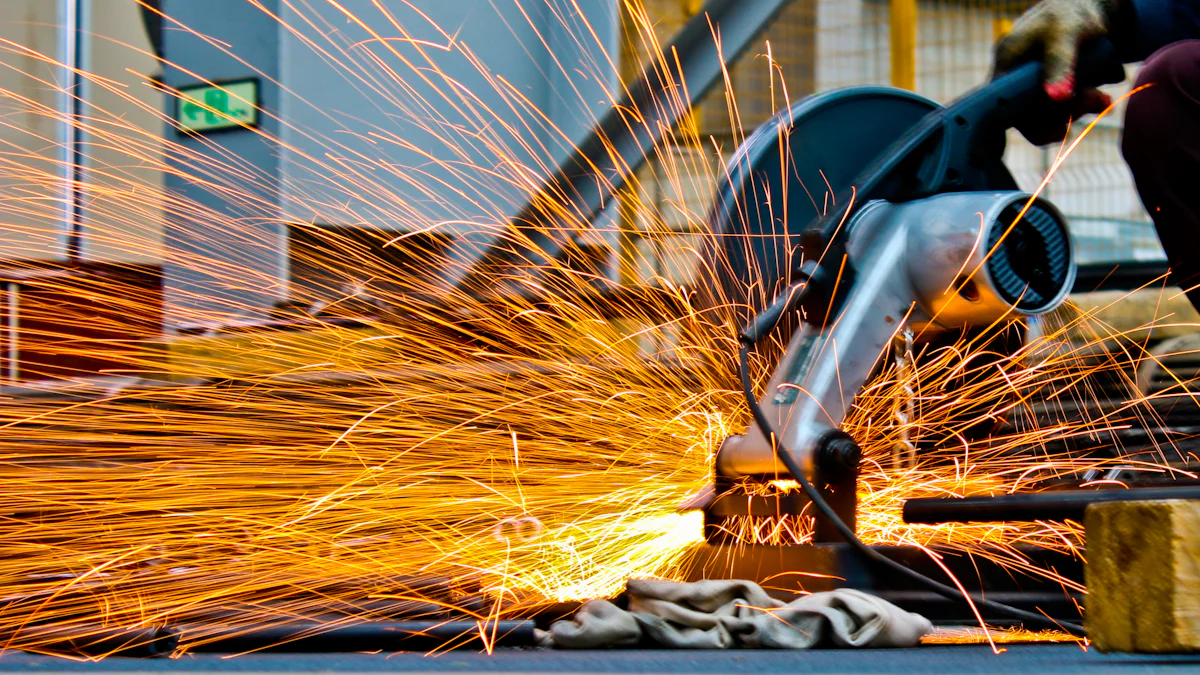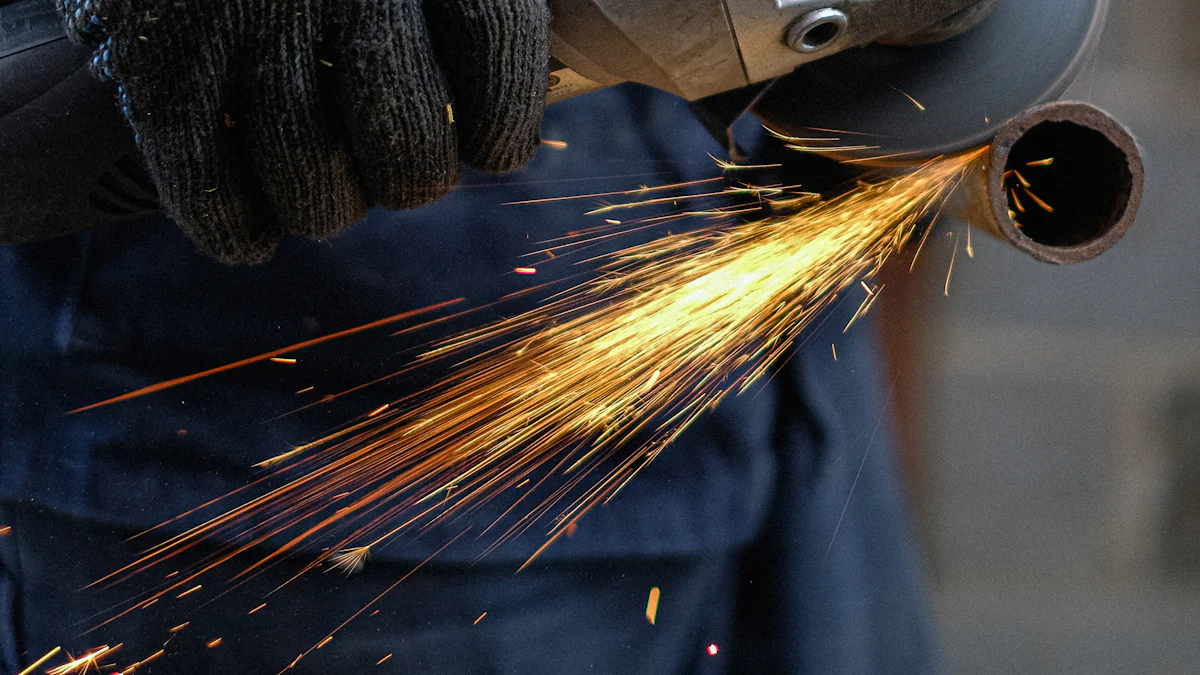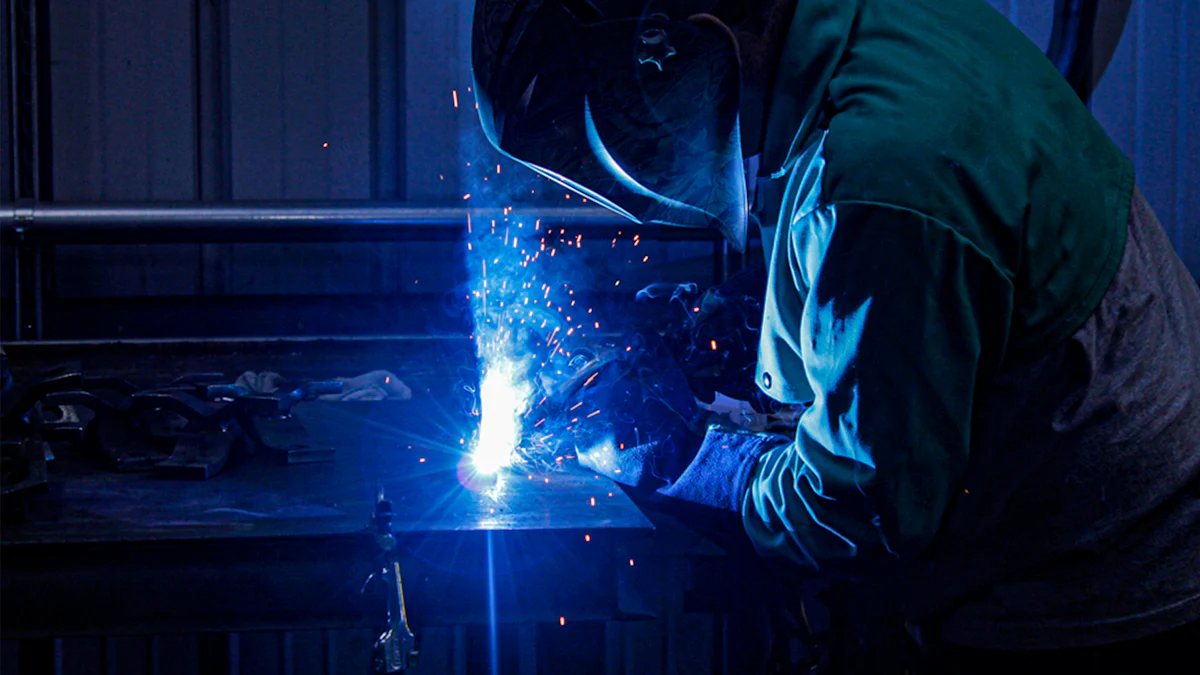
In the realm of metal-cutting, traditional methods have long been the norm. However, with the advent of new technologies, innovative solutions are revolutionizing the industry. A tool that cuts metal is no longer just a simple implement but a sophisticated piece of engineering. The importance of selecting the right tool cannot be overstated, as it directly impacts efficiency and precision in cutting processes.
Metal cutting tools have seen significant advancements in recent years. Innovative coatings and designs are enhancing their performance, while digital integration provides real-time data for improved results. Understanding these developments is crucial for professionals seeking to stay ahead in this dynamic field.
Manual Tools
When it comes to manual metal-cutting tools, a tool that cuts metal can range from the traditional hacksaw to the modern metal air shears. Each tool offers unique benefits and applications for various cutting needs.
Hacksaws
Hacksaws are an original and inexpensive option for cutting through metal and other materials. Ideal for small projects and home improvement needs, they are versatile tools that provide precise cuts. The key benefits of hacksaws include their affordability, ease of use, and portability. However, one limitation to consider is that they may require more effort and time compared to power tools for larger or tougher cutting tasks.
Snips
Snips, also known as shears, are handheld tools designed specifically for cutting metal. There are different types of snips available, each tailored for specific cutting purposes. For instance, tin snips are ideal for cutting soft metals like aluminum and copper, while aviation snips are suitable for cutting curves in sheet metal. Their sharp blades ensure clean cuts with minimal distortion. Common applications of snips include cutting sheet metal, gutters, metal roofing, and studs.
Metal Air Shears
Metal air shears represent an upgrade from manual tin snips by offering power assistance for cutting bulk or long metal sheets efficiently. These tools excel in making clean cuts quickly while maintaining precision. Additionally, they can handle thicker-gauge metals with ease, making them a preferred choice for industrial applications where speed and accuracy are crucial.
Power Tools

Metal cutting professionals often turn to power tools for their efficiency and precision. A tool that cuts metal using power tools can significantly increase productivity and accuracy in various cutting tasks.
Angle Grinders
Angle grinders are known for their versatility in handling different types of metal. They can cut, grind, and polish metals with ease, making them indispensable in metal fabrication and construction projects. Safety is paramount when using angle grinders due to their high-speed rotating discs. Always wear appropriate personal protective equipment (PPE) such as safety glasses, gloves, and a face shield to prevent injuries from sparks or debris.
Reciprocating Saws
Reciprocating saws, also called Sawzalls, are favored for their demolition capabilities and efficiency in cutting through metal pipes, nails, and other tough materials. These powerful tools feature a push-and-pull blade motion that allows for quick and precise cuts. To maximize the efficiency of reciprocating saws, ensure the blade is sharp and securely attached before each use.
Circular Saws
Circular saws offer the convenience of cordless, battery-powered options for metal cutting applications. Models like Milwaukee Tools’ cordless M18 Fuel® Metal-Cutting Circular Saw provide portability without sacrificing cutting power. These saws excel at cutting re-bar and pipes with speed and accuracy, making them ideal for on-site metal fabrication projects.
Advanced Solutions

In the realm of metal cutting, a tool that cuts metal has evolved to encompass advanced solutions that cater to diverse industrial needs. These innovative tools push the boundaries of traditional cutting methods, offering enhanced precision and efficiency in metal fabrication processes.
Dremel Tools
Dremel tools are renowned for their versatility and precision in metal cutting applications. With specialized attachments designed for metal cutting, these tools provide exceptional control and accuracy, making them indispensable for intricate projects. Whether it’s shaping, grinding, or cutting, Dremel tools offer a wide range of capabilities that meet the demands of modern metalworking.
Attachments for Metal Cutting
- Diamond-Coated Discs: Ideal for cutting through tough metals with ease.
- Carbide Cutters: Perfect for shaping and smoothing metal surfaces.
- High-Speed Cutters: Ensures quick and precise cuts on various metal materials.
Precision Work
Dremel tools excel in delivering precise results, thanks to their ergonomic design and high-speed performance. From fine detailing to intricate patterns, these tools enable craftsmen to achieve unparalleled accuracy in their metal-cutting endeavors. The combination of advanced technology and user-friendly features makes Dremel tools a top choice for professionals seeking superior outcomes.
Cold Saws
Cold saws represent a significant advancement in industrial metal-cutting applications, offering unparalleled efficiency and quality. These specialized saws are designed for heavy-duty operations where speed and precision are paramount. With their ability to make clean cuts without generating heat or sparks, cold saws ensure minimal material wastage and enhanced productivity.
Industrial Applications
- Metal Fabrication: Used for cutting solid bars, tubes, and profiles with precision.
- Manufacturing Sector: Essential for producing accurate components in mass production settings.
- Automotive Industry: Facilitates efficient cutting of metal parts for vehicle assembly.
Advantages Over Traditional Saws
Cold saws outperform traditional sawing methods in several key areas:
- Precision: Offers superior accuracy and consistency in cut quality.
- Speed: Enables rapid cutting operations without compromising on finish.
- Safety: Minimizes risks associated with heat generation during cutting processes.
Band Saws
Band saws are renowned for their continuous cutting capabilities, making them ideal for long or repetitive metal-cutting tasks. These robust machines deliver consistent results across various materials, ensuring smooth edges and minimal material distortion.
Continuous Cutting
Band saws operate by moving a continuous band blade around two wheels, allowing uninterrupted cutting motion. This feature is particularly beneficial when dealing with large workpieces or extended cutting requirements.
Durability
Known for their robust construction and longevity, band saws are built to withstand rigorous industrial usage. Their sturdy frames and reliable components ensure consistent performance over extended periods, making them a cost-effective investment for businesses seeking durable metal-cutting solutions.
Metal cutting tools are evolving rapidly, driven by new technologies and digital integration. The industry is witnessing a shift towards customized solutions and strategic partnerships to meet the demands of modern metal fabrication projects. As global trends shape the landscape of metal-cutting technology, focusing on innovation and precision will be crucial for professionals seeking success in this dynamic field. By embracing advanced tools and techniques, the future of metal cutting holds endless possibilities for efficient and precise engineering applications.
